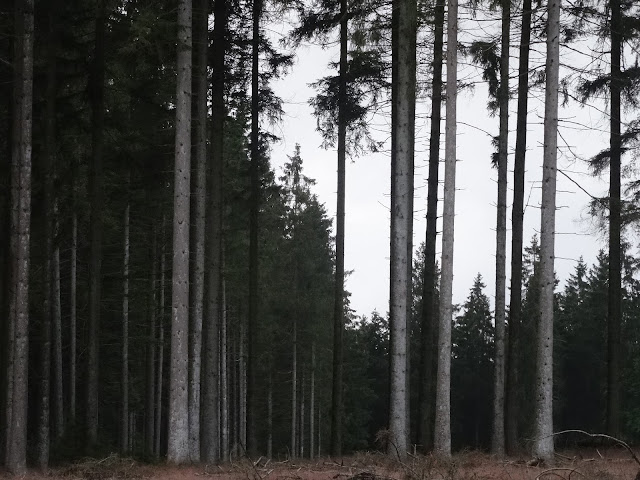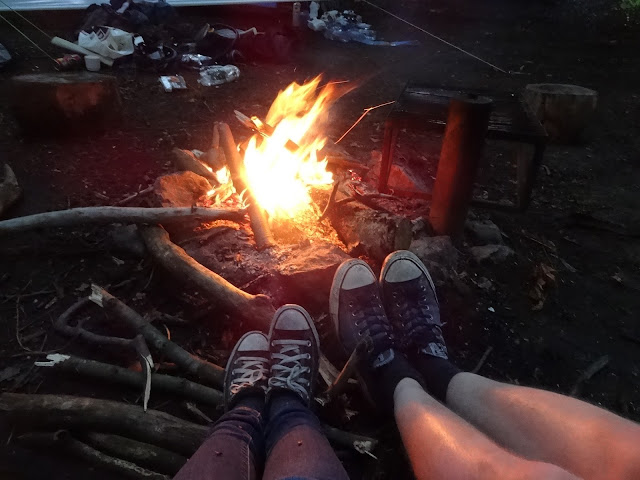In preparation for our trip to Iceland we bought a tent. But we're both not exactly camping veterans and this is actually the first tent I (co-) own so we thought it would be good to use it at least once before we start pitching it under extreme weather conditions in Iceland without a clue about how it works.
Belgium isn't big and there's definitely not a lot of nature (the 3rd most densely country in Europe according to wikipedia) but we manage to find some good hiking spots here and there. This time we were especially lucky because the weather was not great so one of the very popular hiking trails in the Ardennes (Ninglingspo) was almost deserted. We came across a few die-hard families with kids splashed with mud all over but that's about it. It was raining or half-raining almost all the time so I didn't take many pictures during the first half of the hike, even though that was the more beautiful one.
For the test camping we wanted to be somewhere as much outside civilisation as possible. As I mentioned above, this is very difficult in Belgium. We also didn't want to hike with all our stuff so we opted for an alternative: a "bivouac" site in the woods which is essentially wild camping (i.e. without any facilities) but in a designated zone. Unlike in Scandinavia and Scotland, you can't just put up your tent wherever and chances are that most of the land is owned by farmers so finding a good camping spot is difficult. We discovered a really good website called "Bivakzone" where you can find details about designated sites where you can camp for free.
It was not as isolated as I had hoped and when we arrived, there were already three other tents pitched, but it was a nice evening in the end. We could make a camp fire and some of the other people grilled sausages. Too bad I didn't bring any marshmallows! The only disadvantage is that there was no access to drinking water, only a small brook about 10 minutes walk away where you could wash yourself. But that's the idea of wild camping, I suppose...
I didn't sleep great, mainly because I used my old crappy sleeping bag and was freezing all night, but I did make some progress on my "Spencer" during the car trip so that was definitely a yey. Now we're hopefully ready for Iceland!












































